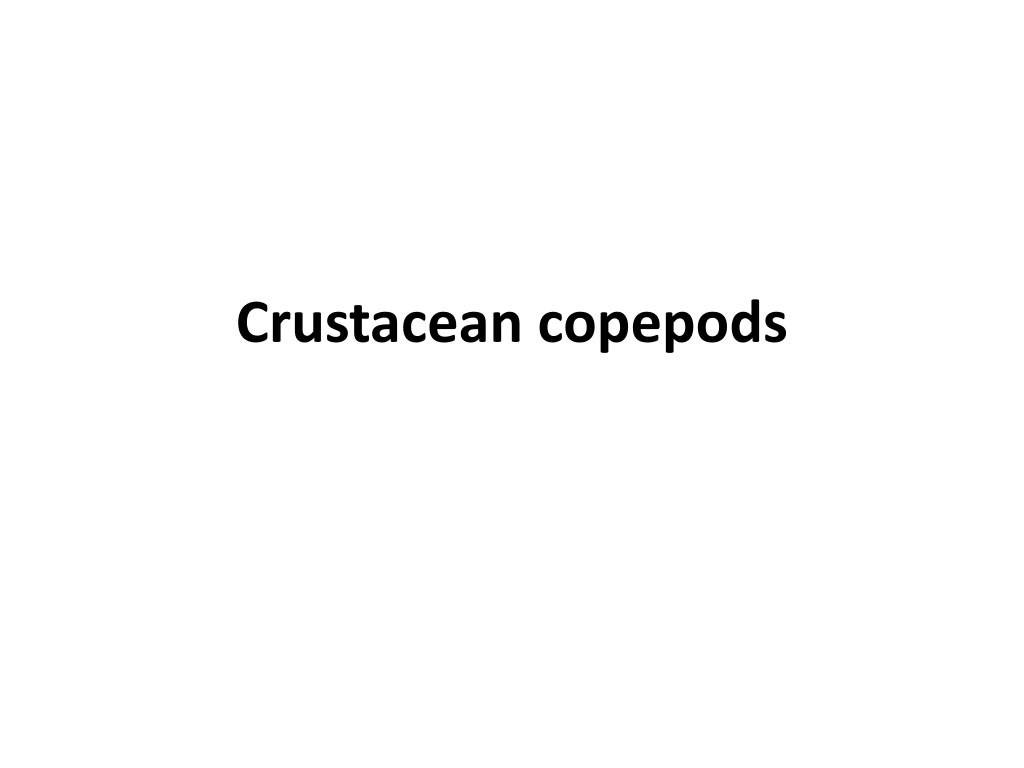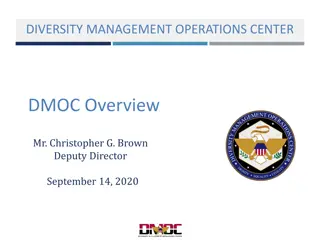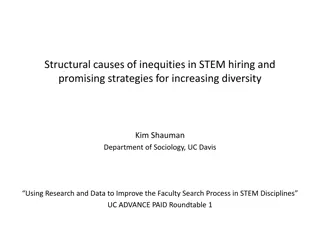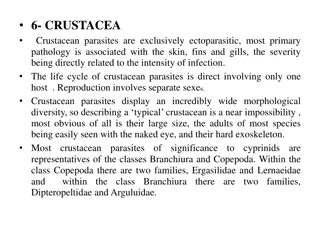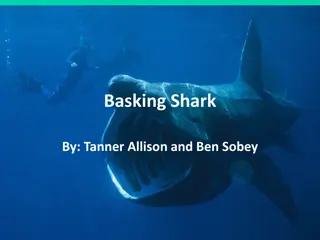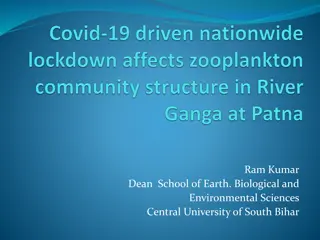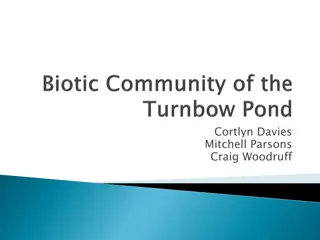Overview of Crustacean Zooplankton Diversity
Crustaceans, including copepods, cladocera, ostracods, and amphipods, play vital roles as non-gelatinous forms of zooplankton in marine ecosystems. Copepods, the dominant constituents of zooplankton, serve as chief food for commercially important fish species. The diversity of copepods is vast, with different suborders like calanoida, cyclopoida, and herpecticoids. Additionally, water fleas (cladocera) and ostracods contribute significantly to marine zooplankton abundance, each with unique characteristics and distributions. Amphipods, while less abundant in pelagic environments, can be found in association with various marine organisms.
Download Presentation

Please find below an Image/Link to download the presentation.
The content on the website is provided AS IS for your information and personal use only. It may not be sold, licensed, or shared on other websites without obtaining consent from the author. Download presentation by click this link. If you encounter any issues during the download, it is possible that the publisher has removed the file from their server.
E N D
Presentation Transcript
Crustaceans are non gelatinous important forms of the zooplankton The crustaceans are divided into subclasses 1.Brachiopoda 2.Cirripedia 3. Ostracoda 4. Copepod 5. Cladocera 6. Cumaceae 7. Mysidaceae 8. Euphausidae 9. Amphipoda 10. Isopoda etc.
Copepods - dominant constituents of zooplankton present in all seas Serve as the chief food of the commercially important shoaling fishes Diatoms - principle food for most planktonic copepods Copepods are divided into seven suborders Among them, calanoida(Microcalanus sp, Eucalanus sp. Temora sp. Lebidocera sp. Pontella sp. Acartia sp. etc); cyclopoida(Copilia sp, Oncaea sp, Sapphirina sp, Corycaeus sp. etc. and herpecticoids (Macrosetella sp, Clytemnestra sp. Aegisthus sp. etc. are important
Copepods are dominant constituents of zooplankton present in all seas Copepods serve as the chief food of the commercially important shoaling fishes Diatoms constitute the principle food for most planktonic copepods More than 4500 species of copepods have been described, of which about 90% are marine
Copepods are divided into seven suborders. Among them, calanoida(Microcalanus sp, Eucalanus sp. Temora sp. Lebidocera sp. Pontella sp. Acartia sp. etc); cyclopoida(Copilia sp, Oncaea sp, Sapphirina sp, Corycaeus sp. etc. and herpecticoids (Macrosetella sp, Clytemnestra sp. Aegisthus sp. etc.are importent.
Cladocera (water fleas) Important marine zooplankton, abundant in plankton samples Feed on phytoplankton and detritus matter Cladocerans such as Penilia, Evadne and Podon are found distributed in inshore waters They are extremely seasonal, reach high density for short period in temperate waters They reproduce parthenogenetically
Ostracods Are smaller crustaceans abundant in tropical coastal waters Characterized by having carapace shell as bivalve shell Species like Gigantocypris. Conchoccia, Halocypris Cypridina, Sarsiella etc. have wide distribution in marine waters
Amphipods Amphipods are less abundant in pelagial, frequently found on siphonophores, medusae, ctenophores, slaps etc. Common genus is Cythere, Bairdia, Themisto etc.
Mysids Mysids or opossum shrimp appear like decapods, shrimps, resembles Euphausids Are mostly marine Are omnivores - feed on living and dead plants and animals Hyperiids, Gammarids and Caprellids - three major groups present in plankton Neomysis, Boreomysis, Eucopia, Gnathophausia, Mesopodopsis etc. present in Indian waters
Euphaussids: krill Euphausids (Euphasia superb) form a major component of the zooplankton and form important in marine food chain Small shrimp like large species Form important food for varieties of fishes- herring, mackerel, copelin, salmon, sardines, herring, salmon, tuna etc. and also for seals, oceanic birds, tuna, whales etc. Euphasia superb
Decapods Include most of the larger conspicuous crustaceans such as prawn, lobsters, hermit crabs and crabs and are generally benthic in the adult state Most of them have pelagic larvae and some of these which are pelagic as adults Are strong enough swimming to be classed as nekton rather than plankton, Lucifer is the genus highly modified for planktonic existence Lucifer is an important genus present abundantly in the Indian seas. Lucifer hanseni
Ichthioplankton Mollusca: Clams and snails produce ciliated trocophore larvae and shelled veliger larvae Ciliated velum serves for locomotion and food collection Trochophora larvae Veliger larvae
Cirripedia: Barnacles produce nauplii, which turn to cypris Nauplii, Cypris
Echinodermata: sea urchins, starfish and sea cucumber produce pluteus larvae of different shapes, which turn into brachiolaria larvae (starfish); metamorphosis to adult. Pluteus larvae Brachiolaria larvae
Decapoda: shrimps and crabs produce zo a larvae; they turn into megalopa larvae in crabs Zo a larvae Megalopa larvae
Pisces: fish eggs and larvae referred to as ichthyoplankton; fish larvae retain part of the egg yolk in a sack below their body until mouth and stomach are fully developed Fish eggs Fish larvae
Squilla larvae Phyllosoma larvae Mysis larvae
